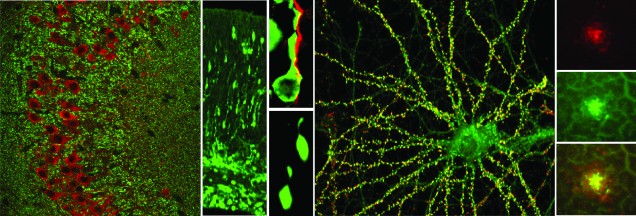Our Research

Major research efforts in our laboratory center on the basic mechanisms of neural development, neuronal plasticity and neurodegenerative diseases.
The complex architecture of the mammalian brain requires a strictly regulated timing of proliferation, migration and differentiation of neurons. Disruptions in neuronal migration result in severe neurological and developmental impairments such as cognitive deficits, epilepsy and premature death that are recognized primarily in the pediatric population. Our goal is to unravel the physiological and functional circuitry that underlies neurodevelopment. We are particularly interested in brain development and plasticity and how this impacts neuropsychiatric disorders such as autism and neurodevelopmental diseases.
Alzheimer’s disease (AD) is a devastating age-associated neurodegenerative disorder characterized by progressive memory loss and cognitive decline. AD affects millions of people world-wide and the disease is becoming more prevalent as the population ages marking as a major public health concern. The main neuropathological hallmark of AD is amyloid plaques that consist of aggregated amyloid peptides derived from the proteolytic cleavage of the amyloid precursor protein (APP). Our goal is to determine the cell biology and molecules controlling APP localization and processing that is of great significance for the mechanistic understanding of AD.
The e4 allele of apolipoprotein E (APOE4) is the most important genetic risk factor for late-onset Alzheimer’s disease (AD) and functionally binds to receptors of the LDL receptor family including apolipoprotein E receptor 2 (APOER2) which is highly expressed and found as multiple alternatively spliced variants in human brain. However, the functional significance such as ApoE ligand binding, downstream receptor signaling and neuronal function of these naturally occurring human apoER2 splice variants remains incompletely understood. Our goal is to define the functional mechanisms of specific ligand-receptor (apoE-apoER2) interactions which could have major implications for our understanding of learning and memory and how it affects AD. See the video of the Harold and Margaret Southerland Alzheimer’s Research Fund that provided the initial funding for this project.